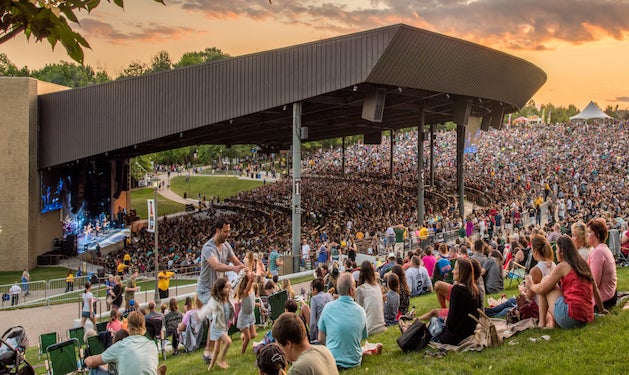Too Close is Comfort: The Re-Emergence of Intentional Communities in America
Spring Oral History Intern Carlene Bermann explores the history of communal living and the role it played during Woodstock.
Said, “I’m going down to Yasgur’s Farm
Gonna join a rock and roll band
Got to get back to the land
And set my soul free.”
- From “Woodstock” by Crosby, Stills, Nash & Young (cover of Joni Mitchell song)
After everything we’ve experienced over the past two and a half years, it’s hard for some of us to imagine ever being close to strangers again–at least not in the same social situations we were used to pre-COVID-19. But just as a global pandemic was spreading, the communal living trend was also on the rise, especially in North America, where the pressures of a fast-paced individualistic society have caused many to seek alternative lifestyles. But do these pressures outweigh the health risks involved in close-contact living spaces?
Self-selecting societies have always been a part of the social fabric of American life. First, there were the early colonists, of course–the Puritans who came from Europe to escape persecution, forming small communities based on religious and cultural similarities. In the 1830s, there were the Transcendentalists in New England, an intellectual and artistic community formed around the ideals of self-reliance, mystical oneness of the purity of the natural world1, to which writers like Henry David Thoreau belonged.
The United Society of Believers in Christ’s Second Appearing, better known as the Shakers, a Protestant sect that broke off from the mainstream religion in 1747 and held similar beliefs to the Society of Friends, or Quakers.2 Shakers believed in sharing everything–property, land, and agricultural resources. All members of the community assisted in raising children, and most Shakers believed in racial and gender equality. Communities proliferated in New England, Kentucky, and Ohio by the mid-19th century.3 Only one Shaker sect remains today, in Maine, known as Sabbathday Lake. 4 But other types of intentional communities have grown in the past decade.
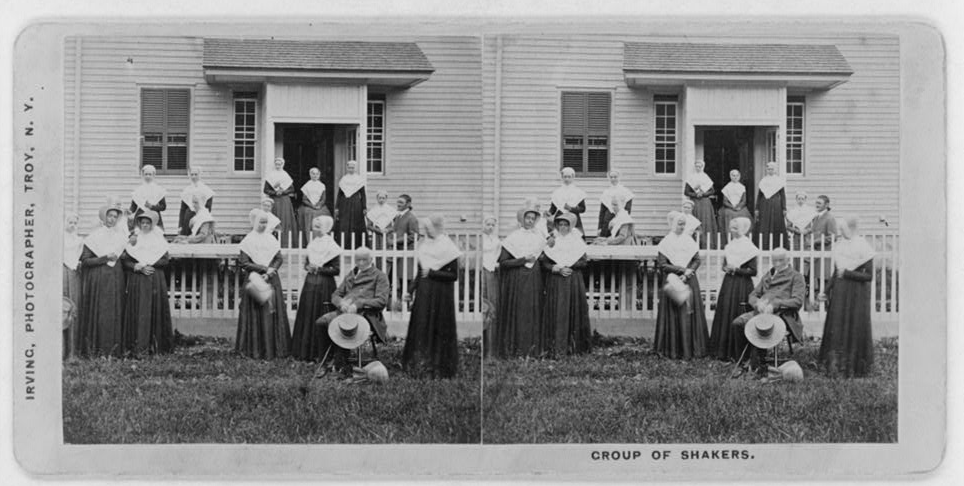
Photograph by James E. Irving, Library of Congress.
All communities are created around shared values and beliefs that set them apart from the larger world. But the term “international community” only came into use in the 1940s in the aftermath of World War II. Its origins can be traced back to Yellow Springs, Ohio, where the Inter-Community Exchange formed to “promote peaceful, cooperative living arrangement (in the hope of eradicating war altogether).”5 The group soon changed its name to The Fellowship of International Communities, setting the stage for the peace-centered hippie communes of the 1960s.
The first alternative communities of the 1960s started in California. The Merry Pranksters, followers of the author Ken Kesey, traveled throughout Oregon and California in 1964 on a brightly painted bus, protesting war and promoting freedom of expression and psychedelic experiences. Hog Farm, another community formed in the 1960s in North Hollywood, is considered America’s oldest hippie commune. Founded by clown and peace activist Hugh Romney–better known as Wavy Gravy–the group also began to travel in re-purposed school buses in 1967, stopping to perform in towns across the country.
In 1969, the Hog Farm was solicited by Woodstock Ventures to set up the site of what would become the most famous music and arts festival of all time. Thus, on August 1969, a short-lived commune, seeded by the existing members of the Hog Farm (and other groups such as the Juke Savages,6 the Long Island Drug Division,7 and the Ohayo Mountain Family8), was born at Max Yasgur’s 600-acre dairy farm in Upstate New York.
Cohabitation was an inescapable part of the Woodstock Music and Art Festival experience. Many embraced the long weekend of very close encounters with few bathrooms, little available food, and no way to escape the rain and mud. Many did not. I can almost feel the cacked dirt and grass stains from Baron Wolman’s iconic festival photographs.
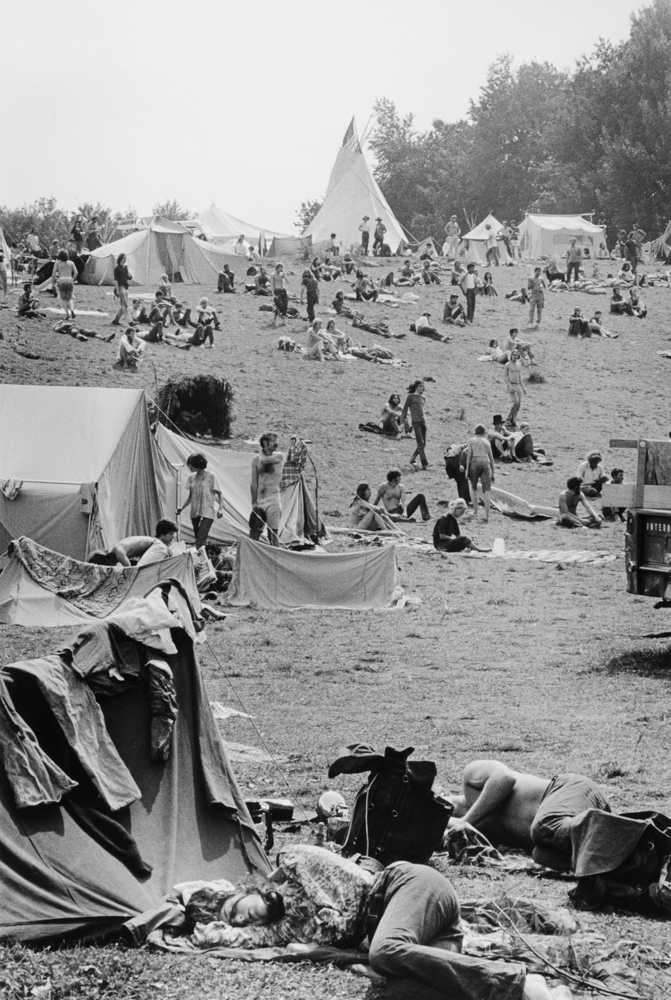
American photographer Lisa Law, a member of the Juke Savages, worked closely with the Hog Farm commune. She documented much of their activity, including at Woodstock. In a 2007 interview conducted for the Museum, she described the group as: “...a bunch of misfits, all living together and helping each other out, feeding each other, experiencing life together, working together, traveling together, playing music together, and (acting) together.”9
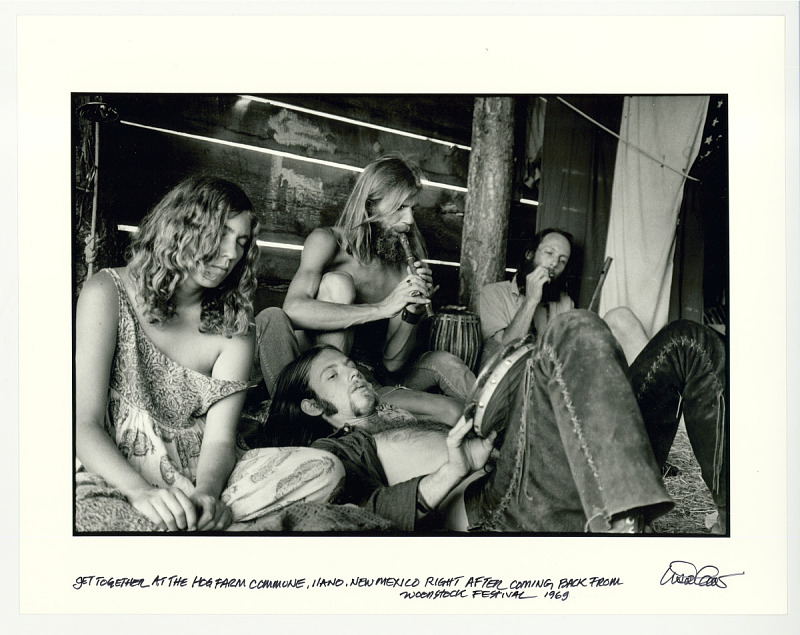
Photograph by Lisa Law. Courtesy of Smithsonian National Museum of American History.
As their camp was set up at the intended entrance to the festival site, the Hog Farm was meant to welcome attendees and set the tone for the event. As the festival swelled to unforeseen proportions, this was more important than ever. Commune members deputized willing attendees to act as Hog Farm “ambassadors” to aid in this mission. Helpers were given screen-printed sashes emblazoned with flying pigs to show their partnership.
Commune members new and old pitched in by cooking and serving meals, helping with the medical tent, and aiding attendees experiencing intense drug trips, among many other tasks.
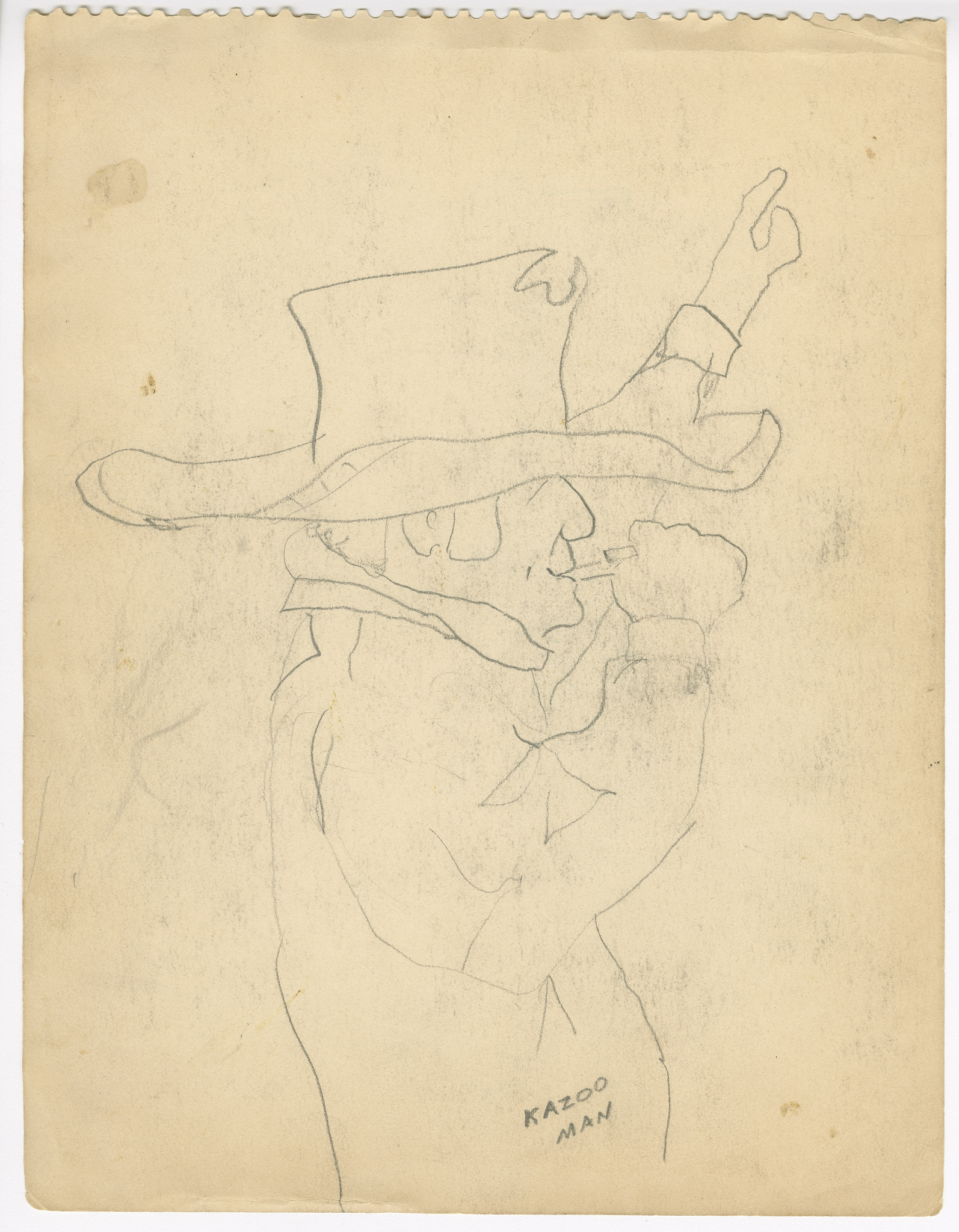
Woodstock festival. As seen in the 2022 special exhibition “& Art Fair"
Other groups of visual artists and performers helped to make Woodstock an unforgettable weekend. The Earthlight Theatre troupe was a California cooperative formed in April 1969 by Allan Mann and Jane Richardson. They were hired to perform their New Age theater shows, dances, and prayers at the festival. Along with Indian yoga guru and religious teacher Ramaswamy Gounder (better known as Swami Satchidananda), Earthlight led Woodstock in its opening prayer and performance on August 15.10
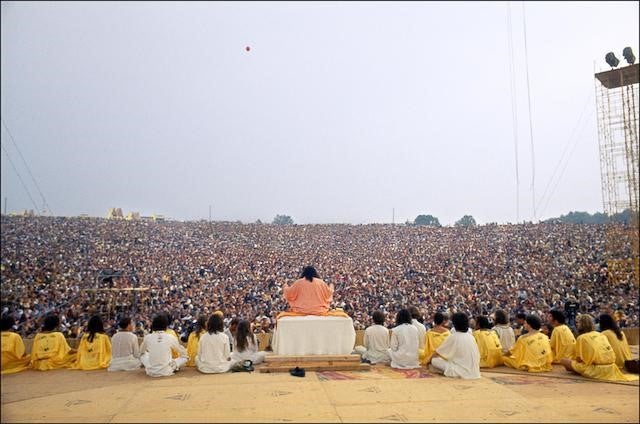
Though the political atmosphere has changed, intentional communities still thrive in the twenty-first century. In fact, according to Mike Mariani of the New York Times, a “new generation of self-created utopias” is being embraced by Millennials seeking a simpler life, less inundated with technology, competitive pressures, and Capitalist consumption, and rich in compassion and nourishing practices for the body and mind.11
In the early 2000s, my sister joined the Twin Oaks Community in Louisa, Virginia–an experience cut short by a contagious illness on the site. She learned about the community at Oberlin College, a place not unlike a commune itself, as could be said of many small liberal arts campuses. Twin Oaks has about 100 members today, adults and children, living and working together on a large rural farm. The community has based itself on principles of social and environmental justice, activism, and egalitarianism since its founding in 1967.12
Another growing intentional community is East Wind, founded in 1974 in the Ozark Mountains of southern Missouri. The 72 members share farming responsibilities, income, housing, domestic chores, and self-governance on a 1,145-acre property that has 27 buildings, primarily used as shelters and food growing and processing. In recent years, the community has grown. Young people are seeking out the peaceful, isolated environment to “wean themselves off fossil fuels, grow their own food, have a greater say in how their society is run, and live in less precarious financial circumstances.”13
What does the future hold for communes in the wake of COVID-19? So far, it would seem that the need for mental and physical support from our fellow humans and the fear of permanent isolation are stronger movitators than the fear of illness and infection. I would not be surprised to see rapid growth in intentional communities in the next few years.
1https://human.libretexts.org/Bookshelves/History/National_History/Book%…
2 "History of the Shakers.” National Park Service. Accessed May 6, 2022. https://www.nps.gov/articles/history- of-the-shakers.htm.
3 Ibid
4 https://www.thetravel.com/are-there-any-shakers-left/
5 Mike Mariani, “The New Generation of Self-Created Utopias: As so-called intentional communities proliferate across the country, a subset of Americans is discovering the value of opting out of contemporary society,” The New York Times, Jan. 16, 2020. https://www.nytimes.com/2020/01/16/t-magazine/intentional-communities.h…
6 Bob Spitz, Barefoot in Babylon (New York: Penguin, 2014), 79, 197.
7 Tony Merlino, interview by Paul Dittmer, 2021. The Museum at Bethel Woods Oral History collection.
8 Mark Berger, Something’s Happening Here: A Sixties Odyssey From Brooklyn to Woodstock, (Albany, NY: Excelsior Editions, 2019).
9 Lisa Law, interview by Northern Lights Productions, 2007. Bethel Woods Oral History collection.
10 Allan Mann, interview by Paul Dittmer, 2019. Bethel Woods Oral History collection.
11 Mike Mariani, “The New Generation of Self-Created Utopias: As so-called intentional communities proliferate across the country, a subset of Americans is discovering the value of opting out of contemporary society.” The New York Times. Jan. 16, 2020. https://www.nytimes.com/2020/01/16/t-magazine/intentional-communities.h….
12 "FAQs - All on One Page.” Twin Oaks Intentional Community. Accessed May 9, 2022. https://www.twinoaks.org/.
13 Mariani, “The New Generation.”
